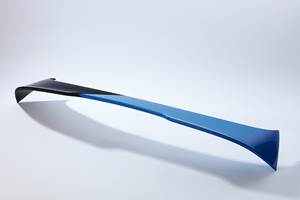NIST Looks at Big Picture of Nanoparticle Manufacturing
New paper aims to identify problems that are common for different materials, processes and applications.
A recent paper in the journal ACS Applied Nano Materials prepared by the National Institute of Standards and Technology (NIST)—Nanoparticle Manufacturing—Heterogeneity Through Processes to Products—is the culmination of a study initiated by a workshop organized by NIST that focused on the fundamental challenge of reducing or mitigating heterogeneity, the inadvertent variations in nanoparticle size, shape and other characteristics that occur during their manufacturing.
The authors point out that today’s engineered nanoparticles are integral components in everything from the quantum dot nanocrystals coloring the brilliant displays of state-of-the-art televisions and nanocomposites, to the miniscule bits of silver helping bandages protect against infection. However, commercial ventures that look to profit from these tiny building blocks face quality control issues that, if not addressed, can reduce efficiency, increase production costs and limit commercial impact of the products that incorporate them.
With the aim of helping to overcome these obstacles, the NIST and the nonprofit World Technology Evaluation Center (WTEC) advocate that nanoparticle researchers, manufacturers and administrators “connect the dots” by considering their shared challenges broadly and tackling them collectively rather than individually. This includes transferring knowledge across disciplines, coordinating actions between organizations and sharing resources to facilitate solutions.
The new paper’s researchers from NIST’s Center of Nanoscale Science and Technology and Materials Science and Engineering Division, according to lead author NIST physical scientist Samuel Stavis, “looked at the big picture of nanoparticle manufacturing to identify problems that are common for different materials, processes and applications….Solving these problems could advance the entire enterprise.”
Jeffery Fagan, NIST chemical engineer and co-author notes that heterogeneity can translate to significant consequences in nanoparticle manufacturing. As such, the paper stresses that the most profitable innovations in nanoparticle manufacturing minimize heterogeneity during the early stages of the operation, reducing the need for subsequent processing. This decreases waste, simplifies characterization and improves the integration of nanoparticles into products—all of which save money.
The paper’s authors illustrate this point by comparing the production of gold nanoparticles and carbon nanotubes. For gold, the initial synthesis costs can be high, but the similarity of the nanoparticles produced requires less purification and characterization. Therefore, they can be made into a variety of products, such as sensors, at relatively low costs, they note. In contrast, the more heterogeneous carbon nanotubes are less expensive to synthesize but require more processing to yield those with desired properties. The added costs during manufacturing currently make nanotubes practical only for high-value applications such as digital logic devices.
“Although these nanoparticles and their end products are very different, the stakeholders in their manufacture can learn much from each other’s best practices…by sharing knowledge, they might be able to improve both seemingly disparate operations,” says J. Alexander Liddle, NIST materials scientist and co-author. Finding ways like this to connect the dots is critically important for new ventures seeking to transfer nanoparticle technologies from laboratory to market, according to the authors.
WTEC nanotechnology consultant and co-author Michael Stopa notes that nanoparticle manufacturing can become so costly that funding runs out before a product can be brought to market. “In our paper, we outline several opportunities for improving the odds that new ventures will survive their journeys through this technology transfer ‘valley of death.’”
In the paper, the authors discuss how manufacturing challenges and innovations are affecting the ever-growing number of applications for nanoparticles, including those in the areas of electronics, energy, health care and materials.
Related Content
SPE Automotive Awards Applaud ‘Firsts’ and Emerging Technologies
The 51st annual SPE Automotive Innovation awards gave nods to several ‘firsts’ and added alternative vehicle systems category.
Read MoreDesign Optimization Software Finds Weight-Saving Solutions Outside the Traditional Realm
Resin supplier Celanese turned to startup Rafinex and its Möbius software to optimize the design for an engine bracket, ultimately reducing weight by 25% while maintaining mechanical performance and function.
Read MoreABC Technologies to Acquire Windsor Mold Group Technologies
The Tier One automotive supplier with compounding and blowmolding machine capabilities adds the 50-yr-old molder and moldmaker.
Read MoreK 2022 Preview: Engineering Materials for Sustainability and E-Mobility
Materials that are sustainable yet offer equal performance to their fossil-based counterparts will be prominent at K 2022.
Read MoreRead Next
Processor Turns to AI to Help Keep Machines Humming
At captive processor McConkey, a new generation of artificial intelligence models, highlighted by ChatGPT, is helping it wade through the shortage of skilled labor and keep its production lines churning out good parts.
Read MoreLead the Conversation, Change the Conversation
Coverage of single-use plastics can be both misleading and demoralizing. Here are 10 tips for changing the perception of the plastics industry at your company and in your community.
Read MoreTroubleshooting Screw and Barrel Wear in Extrusion
Extruder screws and barrels will wear over time. If you are seeing a reduction in specific rate and higher discharge temperatures, wear is the likely culprit.
Read More


























